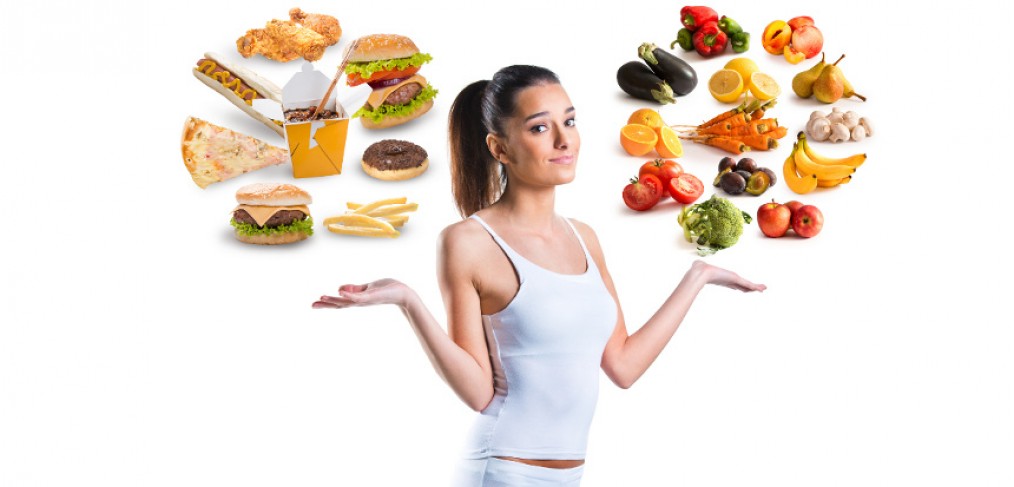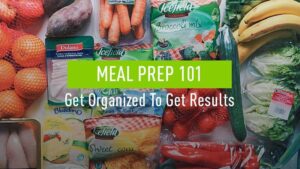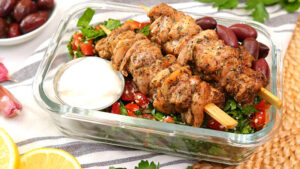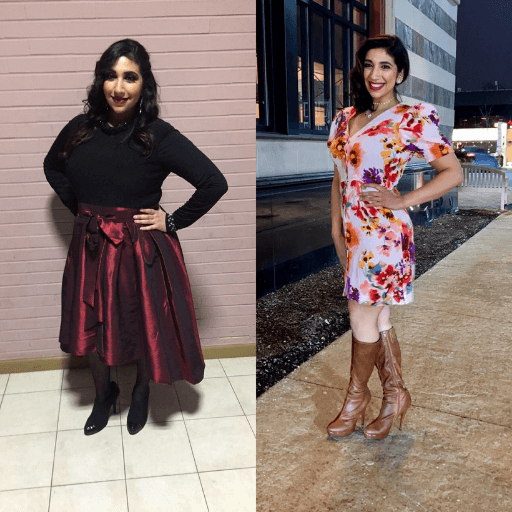You’ve been trying to lose weight.
You cut out all of the “bad” foods.
No more chips.
No more cookies.
No more sweets.
Only healthy eating from here on out – no exceptions!
At least, that’s the plan. It works for a couple of days, maybe even a couple of weeks, but then someone brings home your favorite cookies, and suddenly, you catch yourself elbow deep into your third sleeve of Oreos.
Now you’re feeling guilty, hopeless, and not sure if you’re even cut out to lose weight.
This isn’t the first time you’ve tried losing weight, unfortunately, it’s not the first time you’ve fallen off the wagon either. Maybe you’ve even lost all the weight before only to put it back on faster than before (which is common here in the US).
You’re well-intentioned and committed but those damn Oreos always ruin things for you, or that’s what you tell yourself at least.
The reality is, your perception of the foods you eat is what’s holding you back from being successful with your weight loss. The fact that you paint a big red “X” over some of your favorite foods is holding you back from actually making life long progress.
That’s because one of the fundamental aspects of any successful weight loss journey is the perception that you have and your relationship with food.
The P3 Model For Fat Loss
The P3 Model is a basic breakdown of how fat loss works. Check out the diagram below:

Basically, by changing your practices (habits, training, eating habits, sleep, etc,) and adjusting your perceptions (relationship with food, self-worth, mindset, etc.), your body’s physiology will be forced to adapt. This adaptation is your body losing fat based on the practices and perceptions you make.
You can’t skip any part of this to get to the physical change, you’d break all the laws of science.
You could see great progress by choosing the right practices, but with poor perceptions, those results will be temporary.
Likewise, you could have great perceptions, but with poor practices, you won’t get far with your fat loss goals.
The good news is: you have full control over your practices and perceptions – meaning you have full control over your transformation too!
Now that we understand the importance of having a healthy perception of your physical transformation – let’s break down how we can improve your perception of food for life long fat loss success.
Here are the most common flaws in thought that people struggling to lose weight have:
Labeling food as “good” or “bad”
I’m about to blow your mind with this one.
What if I told you that there are not good or bad foods…all food is just that – food.
*pause for your mind-blowing*
I know what you’re thinking, “are you saying a donut is just as good as a salad?”
That’s a great hypothetical question!
The answer is actually, it depends.
Sometimes you need a donut for your mental health or to satisfy a craving – in that situation, it would be better to have a donut because the salad just won’t do the job.
Of course, nutritionally, a donut is not equal to a salad, and that leads us to the true dichotomy of foods.
There aren’t any good or bad foods, but there are:
Foods that are more nutrient-dense and foods that are less nutrient-dense.
Foods that are more satiating and foods that are less satiating.
Foods that are higher in calories and foods that are lower in calories.
You can enjoy a donut as long as you understand it’s made of more calories, fewer nutrients, and won’t be as filling for you.
The donut alone will not ruin anything for you in terms of fat loss, but you thinking that it does can ruin the rest of the day for you. That’s what leads to binges and feelings of inadequacy.
In the end, what you have collectively eat at the end of the day (or week) will ultimately dictate the progress you see!

It’s Not The Food Choices – It’s Calories
On a related side note: your total calorie intake at the end of the day is the biggest determinant of whether or not you gain weight.
This was best illustrated by Mark Haub who went on the famous “Twinkie Diet” – where all he ate was twinkies for a 10 week period – and lost 27 pounds (you can read more about the study here).
This isn’t to say you should only be eating twinkies (please don’t do this) but that you CAN enjoy foods that aren’t as nutrient-dense and still lose weight!
Eliminating Certain Foods Forever
Any weight loss program that demands you give up your favorite foods forever is short-sighted and ridiculous.
It’s short-sighted because what happens when you lose all of the weight you want to lose? Are you going to go back to your old eating habits that led to your weight gain in the first place, or are you just going to eat like a diet forever?
Your diet while losing weight should look similar to how you’ll eat once you lose all the weight.
This way you learn how to incorporate your favorite foods into your day to day life without worrying about how it’ll affect your weight!
Not to mention this whole process is about a lot more than losing weight. Sure that’s the goal, but really, it’s a stepping stone to the ultimate goal of living a happier and healthier life!
Being restricted in your food choice when you go out with friends, during celebrations, or even when someone brings treats to the office is not how a happy life is lived.
Not Understanding The Type Of Eater That You Are
A large majority of the population turns to food when they’re looking to change what they’re feeling.
Stress eaters, emotional eaters, and comfort eaters are a few common ones.
Knowing and understanding the type of eater that you are will help you identify your emotions better and can lead to finding healthier alternatives to manage what you’re feeling.
This particular one requires a lot of introspection and awareness, but once you become honest with yourself and find the root cause of your habits you can attack it head-on and shift from overeating to feeling better more!
The Solution
The flexible dieting approach is one that focuses on creating a diet that revolves around your favorite foods while working toward your fat loss goals.
It starts by listing your “non-negotiables” foods that you can’t cut out no matter!
Then you ADD foods into your diet that increase the diversity of nutrients you receive while managing the total calorie intake of your diet.
It’s actually the exact approach we take with all of our coaching clients.
It’s not about over restricting and being miserable.
It’s about finding balance so that you can enjoy your life while dieting and reaching your goals – and maintain the results for life!
If that sounds like the kind of plan you’re looking for – schedule a free strategy call with one of our coaches so we can map out the best course of action specifically for you!







